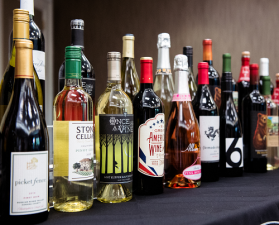Millennials Driving Trends in Beer, Wine & Spirits 11/30/2017
Millennials are now the largest demographic group in the U.S., and the diverse properties of this younger group of consumers are driving trends in the adult beverage category, according to Daniel Brager, SVP – Beverage Alcohol Practice at Nielsen, who spoke at ECRM’s recent Global Wine, Beer & Spirits EPPS.
“These younger consumers are looking for a product transparency, authenticity, and an emotional connection with brands,” he says. “They want to healthier products -- though they must still taste good – and they have an appetite for indulgences and social enjoyment. They value the experiences sometimes more than the brands, and are looking for new choices, alternative packaging, styles and flavors.”
What’s more, fewer of these consumers are exclusive drinkers of one category, and they move across beer, wine and spirits depending on the drinking occasion. Within each category, several key trends are now playing out, according to Brager and retailer buyers and suppliers interviewed by ECRM staff during the session. Here are some of them:
Beer
Mexican beers are leading in terms of growth, according to Brager, and while many craft beer brands are showing double-digit growth, many of the top 100 craft beer brands are seeing declining sales. In addition, off the top 40 growing craft beer brands, 15 are owned by big beer brands, many which have bought their way into the craft business. On average 46 percent of craft beer sales come from their home state.
IPAs continue to dominate the craft beer segment, with citrus and tropical flavors like grapefruit, tangerine and pineapple most popular. Sour styles are also very popular. As far as packaging, convenience is driving the growth of cans, which now account for approximately 20 percent of craft beer sales (versus 56 percent of all beer). Among the most significant factors in the popularity of craft beers is the ability of consumers to “discover something new,” according to Nielsen.
Wine
The United States is the world’s largest wine consuming market, according to Brager, with growth led by brands from New Zealand, France and Italy, as well as Oregon in the United States. Rosé, Sauvignon Blanc and red blends are contributing heavily to the growth in the category, and in fact, many of the attendees noted that Rosé was the biggest trend they are seeing in wines. When it comes to Rosé, Brager noted that there is an opportunity to extend the season in warmer climates beyond summer – through Thanksgiving and Christmas.
Alternative packaging, such as boxes and cans, is a small but growing segment that meets a variety of “occasion needs,” (see our previous post on this from last year’s session), and sparkling wines and Prosecco are still in great demand.
Not surprisingly, with wellness such a big factor in consumer’s choices these days, particularly with Millennials, products with natural and organic ingredients continue to show strong growth.
Spirits
When it comes to spirits, it’s the diversity and versatility that makes them popular among the Millennial crowd, as there are endless ways in which they can be mixed. “Every drink can be a new drink,” says Nielsen’s Brager. In the same way consumers like trying craft beers because they like discovering something new, there are endless ways (depending on mixology skills) of creating new and unique cocktails with spirits.
In general, higher-end spirits are driving growth, with whiskey garnering 15 percent of sales and vodka 20 percent of sales.
CLICK HERE TO REGISTER FOR ECRM’S 2018 GLOBAL WINE, BEER & SPIRITS EPPS


Sarah Davidson is ECRM's SVP of Grocery, and can be reached at 440-542-3033